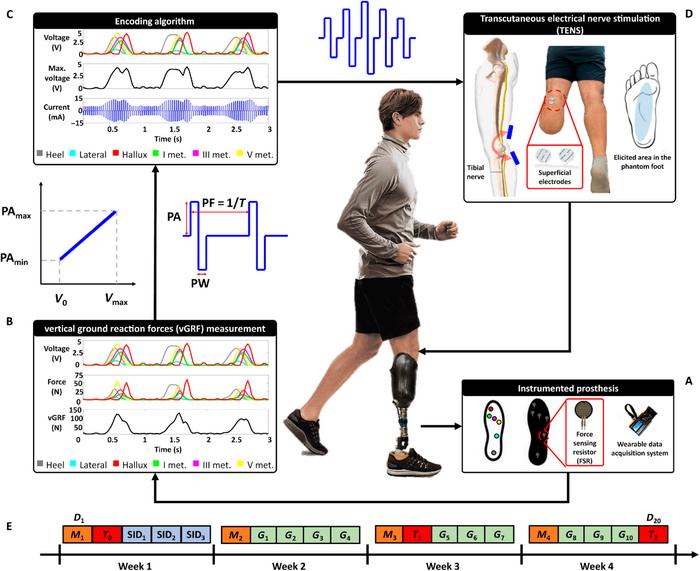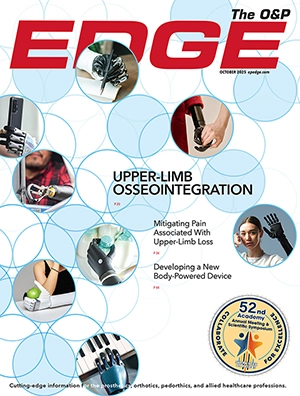A research team tested transcutaneous electrical nerve stimulation (TENS) as a noninvasive means for restoring somatotopic sensory feedback in people with lower-limb amputations and found the system was able to elicit natural, painless, and tactile sensations in the phantom limb with a good level of repeatability. The researchers characterized the evoked sensations in terms of perceptual thresholds, referred sensation, size, and similarity with 13 participants (six with transtibial amputations and seven with transfemoral amputations).

The effect of TENS on the ambulation performance of two participants was evaluated in terms of lower-limb kinematics, spatiotemporal parameters, and vertical ground reaction force over a four-week experimental protocol and was found to significantly improve their walking capabilities and increase their gait symmetry and body weight distribution.
The researchers said that the study demonstrated how TENS can overcome the drawbacks of “invasive (i.e, the need for surgery) and noninvasive (i.e., the elicitation of a nonsomatotopic feedback) methods….”
“In the future, evidence from a larger population should be gathered to confirm the obtained results. Moreover, the trial should be conducted in a more realistic scenario to evaluate whether unevenness and slopes of the terrain can negatively affect the participant’s ambulation.” said Andrea Demofonti, PhD, a researcher at Università Campus Bio-Medico di Roma and one of the study’s authors.
Editor’s note: This story was adapted from materials provided by Beijing Institute of Technology Press Co.
The paper, “Restoring somatotopic sensory feedback in lower limb amputees through noninvasive nerve stimulation” was published in the journal Cyborg and Bionic Systems.




